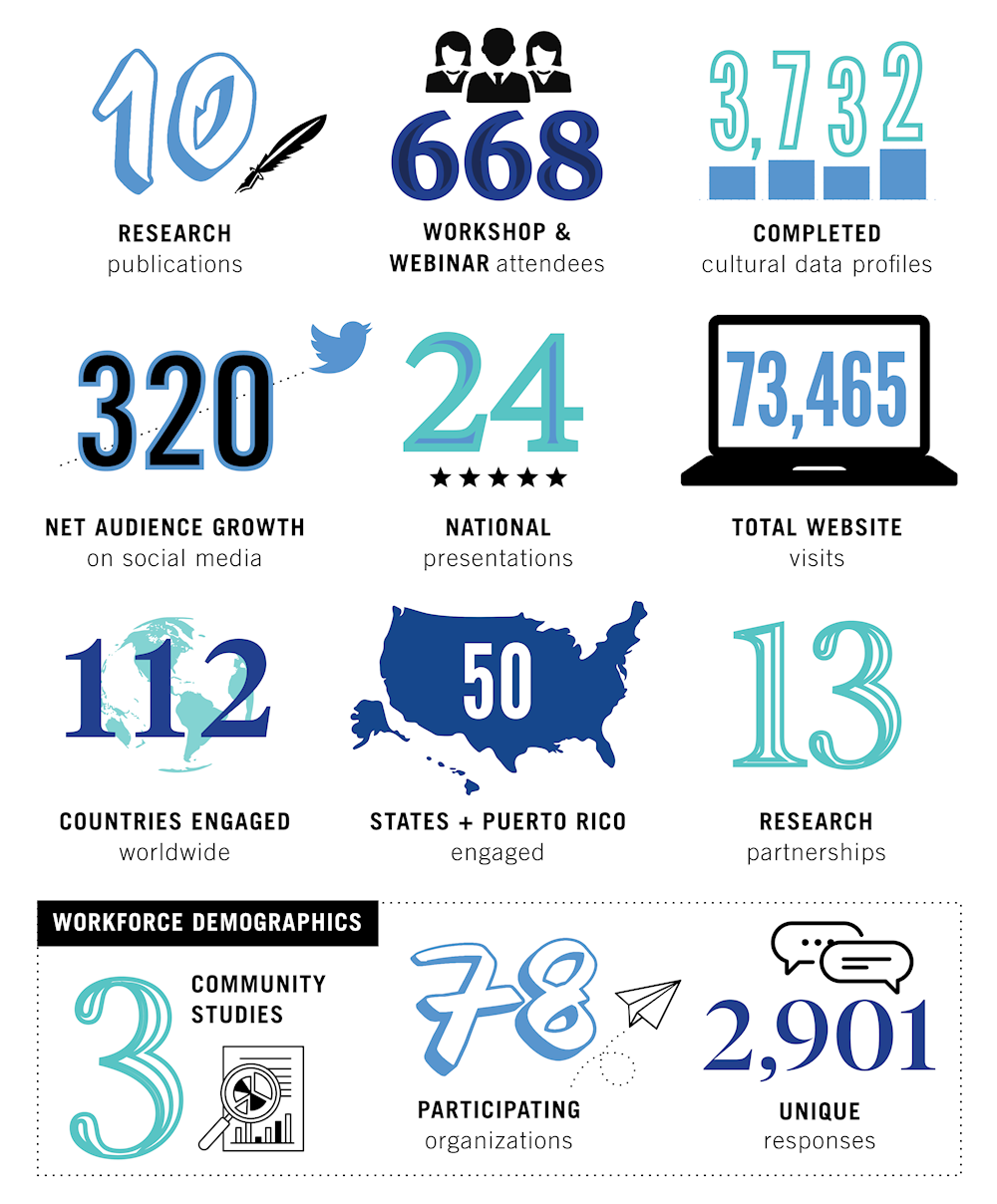A Year in Review | Annual Report 2022
- DataArts News
- Posted Jan 18, 2023
For SMU DataArts, 2022 was a year of introspection and evolution as we embraced a new mission and three-year strategy which will guide our work through 2023 and beyond. It was also a year of broadening and strengthening meaningful connections across the sector through presentations and online trainings, research projects and reports, and our data collection partnerships.
As we begin this new year, we look forward to applying the lessons that have emerged from the upheaval of the last few years and dedicating our efforts to providing the insights that communities and individuals need to build strong, vibrant, and equitable arts communities.
2022 by the Numbers

Top Five Publications of 2022
#5 Studying Early Pandemic Data: Less Fundraising Expenses Led to Higher Returns for Arts and Cultural Organizations
Arts and cultural organizations maintained steady growth in contributed revenue early in the pandemic, and they managed to do so while spending less on fundraising, thereby increasing their efficiency.
#4 Studying Early Pandemic Data: Did Giving Sustain the Arts?
Two years after doors closed across the nation, we have the data that reveals how shifts in revenue impacted arts organizations and resulted in a greater reliance on giving.
#3 Unemployment in the Arts Doubled that of the National Average in 2020
By April of 2020, overall arts and culture unemployment rates spiked to nearly 30%, and BIPOC and disabled individuals were disproportionately affected.
#2 When Will Arts Attendance Return?
New data suggests that waning vaccine efficacy, soaring infection rates, and breakthrough cases have shifted demand patterns among the vaccinated as people opt to just stay home.
#1 The Top 40 Most Arts-Vibrant Communities of 2022
The 2022 Arts Vibrancy Index includes cities listed for the first time: Salt Lake City, UT; Ann Arbor, MI; Kalamazoo-Portage, MI; and Brevard, NC.
CDP Year in Review
Get an overview of the highlights, updates, and new perspectives accomplished by another year of national CDP participation.

Wesley
Arts Fort Worth, TX
“Arts organizations have few advocates conducting research with the focus and calibre of SMU DataArts. Every arts nonprofit has something to gain from their work.”
Thank You to Our Major Contributors
Fiscal Year 2022
- Bloomberg Philanthropies
- Andrew W. Mellon Foundation
- William & Flora Hewlett Foundation
- Anonymous
- The Meadows Foundation
- The Ford Foundation
- Bloomberg Consulting LLC/Bloomberg Associates
- William Penn Foundation
- ArtsKC
- Calgary Arts Development
- Mass Cultural Council
- Donna M. Wilhelm
- Doris Duke Charitable Foundation
- Michigan Arts and Culture Council
- Los Angeles County Department of Arts and Culture
- Gaylord and Dorothy Donnelley Foundation
- Virginia G. Piper Charitable Trust
- Flinn Foundation
- Heinz Endowments
- Nancy A. Nasher and David J. Haemisegger
- Melissa F. Fetter and Travis Fetter
- Ohio Arts Council
- Oregon Arts Commission
- Cuyahoga Arts & Culture
- California Arts Council


